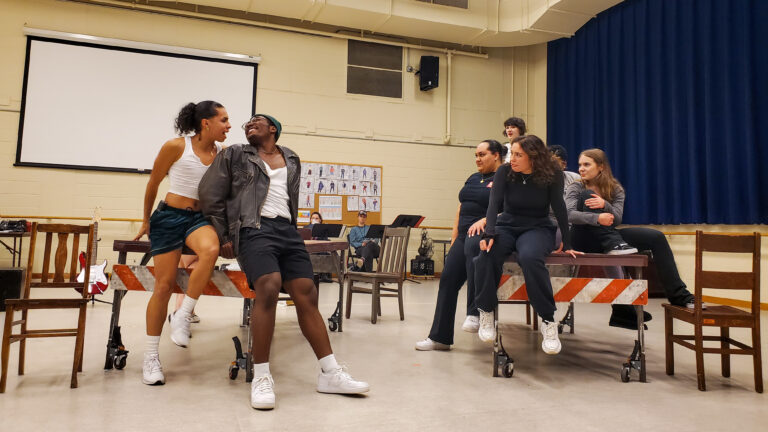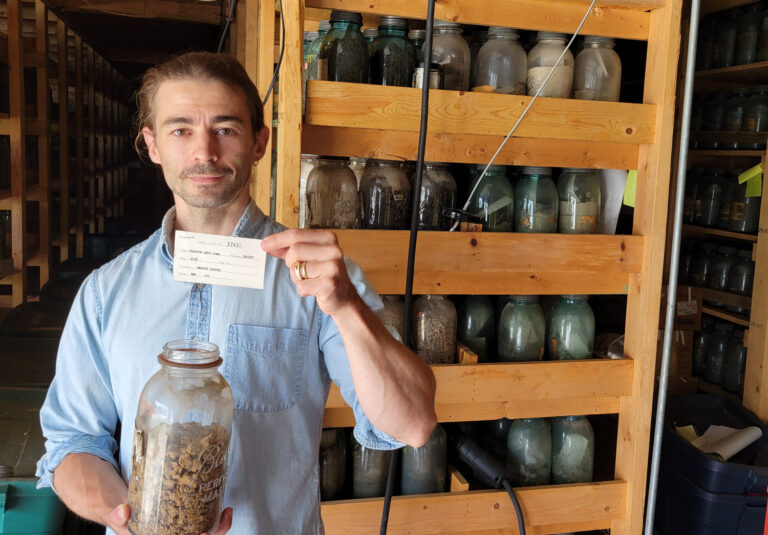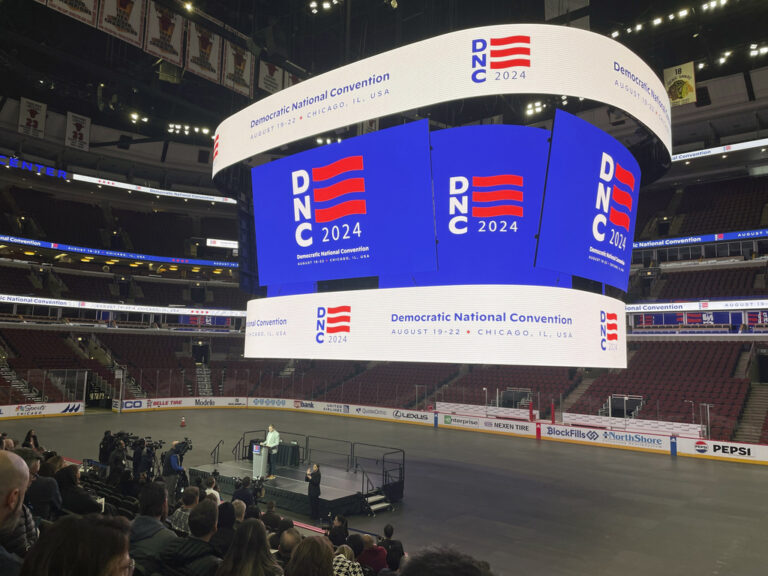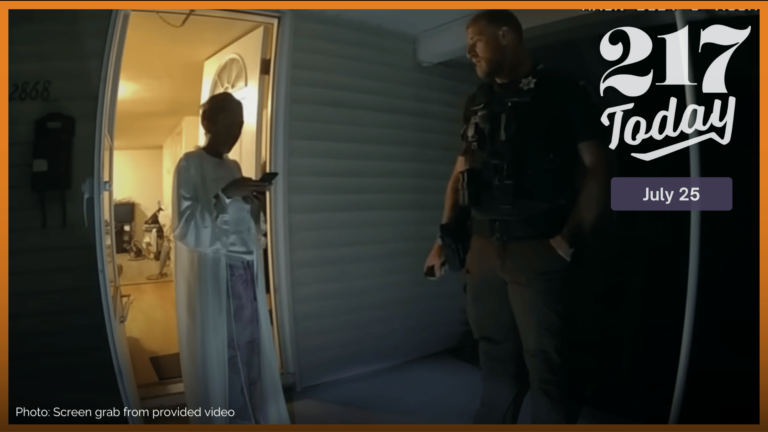Champaign – With the Colwell Playhouse under construction at the Krannert Center for the Performing Arts, Illinois Theatre’s fall production of ‘RENT’ will take the stage at the Virginia Theatre. IPM’s Owen Henderson and Morning Edition host Kimberly Schofield had the opportunity to sit down with the show’s director, Lisa Gaye Dixon, and music director, Justin Brauer, to discuss the enduring relevance of ‘RENT,’ nearly thirty years after its initial release.
Catch ‘RENT’ at the Virginia Theatre in downtown Champaign, starting Thursday, October 26th through Sunday, October 28th. All performances begin at 7:30pm.
Owen Henderson: What made Illinois Theater choose this show for this season?
Lisa Gaye Dixon: One of the sort of external reasons was because we had just been through a pandemic, which isn’t quite over yet. And of course, this play addresses the cost of a pandemic from another point of view. And also ideas of censorship and artistry, which are abound right now. There were a number of things that sort of connected why, in this moment, might we do this. How do we talk about all of those things in our community and the importance of community as we’re trying to look towards having had a national societal experience? And how do you move forward out of that? Sometimes we reflect back in order to look at where we are in the moment.
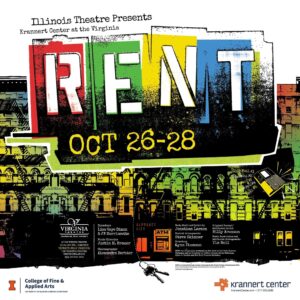
Justin Brauer: As a directing team, we’ve lived with this show for 30 years, and I think assumed that everybody has lived with the show for 30 years. And we found really early on actually, there was a lot of cultural attitude built into the show that we grew up with and internalized. For me, this was the first time working on production that I felt a sizeable generational gap with the cast. Their experiences, you know, growing up in the 2000s, were very different in terms of attitude about language and otherness and the way that we portray that. You look at populations that have been marginalized or othered, often you find language that becomes reclaimed in terms of celebration of self and making the majority uncomfortable in the choices they’ve made in treatment…that, I think, Lisa and I have internalized, and we actually had to have pretty sizeable conversations with the cast, who’d say, “Hey, I don’t know that we should be saying this.” And so we talked about where some of this language comes from. On the flip side of that, it’s our duty and responsibility as artists to honor the work and the time that the work came from and some of the challenges working with a text that is 30 years old now and how we view that today.
OH: As someone who did grow up as a member of Generation Z, and thinking about that this is a show about the HIV epidemic, among many, many other things. But that’s where this show is set. And though there’s a wide variety of characters and a wide representation among those characters, the show does largely center on two straight white men. As someone who hasn’t been inundated with the show, I was curious what the conversations may have been like in terms of thinking about who did this epidemic affect, which stories are being told? And I think that pairs with those conversations about language and generational understandings.
LGD: Sometimes in the zeitgeist that we’re in right now, the idea of context or conceptualizing something that is 30 years old or something that spoke in the moment to a generation…how you look at the context of that is sometimes a difficult conversation to have. For those who are in the now, some of the language that was being used was, patently, language that folks would use against marginalized communities, but the language was being used by those marginalized communities and being reclaimed. So we had to have a conversation around that. And there was pushback, and sometimes a lack of understanding about the fact that that context meant something to those folks. Then, the other thing is, it’s interesting because people talk about the show centering around straight white men. I actually think the heart of the show is about Angel and Collins, two people of color and one of whom is non-binary, and is Latinx and another who is African American. But I also believe the heart of the play, written by Jonathan Larson, I do think that he wrote very autobiographically about his friends, folks that he was friends with at the time. Those folks are the folks at the center of the story.
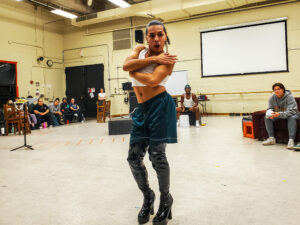
JB: Yeah, I agree that Angel really is the heart of this show and is the glue of this group of people. The range of human experience that this story tells is so broad. This is a human story. On the flip side of that, especially when we talk about why this play now…why this play 30 years ago from a straight white man…is that he had the opportunity to tell the story. When you look at gay representation in musical theater storytelling, up until that point, we have La Cage (aux Folles), which is not necessarily the great social triumph that we want it to be, you know, it’s a celebration, but it’s not triumphant in its representation. But you get something like Rent, which tells this really human story about people of all genders and sexualities and opens the doors for stories like A Strange Loop from a gay black man telling the story of his life as a gay black man. I think that it’s really important as artists that we look at that lineage and make sure that our students know where we came from as artists, where the art has been, how we got to where we are, where we’re going.
Kimberly Schofield: Yeah, the origins are super important. Is there anything specific with this production through Illinois Theater that the audience can look forward to?
LGD: Well, there are two things definitely, which I think are fun things. One is, the band is onstage and the band is part of the show. And one of the College of Fine and Applied Arts’ edicts is that we want to try and interact with the community more than just a “come to our show,” but also to have the community be a part of the art that we make. So with the wonderful set piece at the end of Act One, La Vie Bohème, we are putting the lyrics to the last stanza in the program and we are going to have signage and we invite the audience to get up and sing and dance in the aisles with us. Because it is a joyful and joyous moment. And we’d like very much to share our joy in making art with the audience, even if it’s only for that small moment, for them to feel a part of the community that these actors have created. Justin made a very good point the other day with the cast, which is that a lot of times when you do this play, it’s about this wonderful community that you build, and we want to make sure it’s about a wonderful community that we build, including the audience.
KS: That’s Lisa Gaye Dixon and Justin Brauer, the director and music director of Illinois Theatre’s Rent.
Krannert Center for the Performing Arts is an underwriter of Illinois Public Media.

